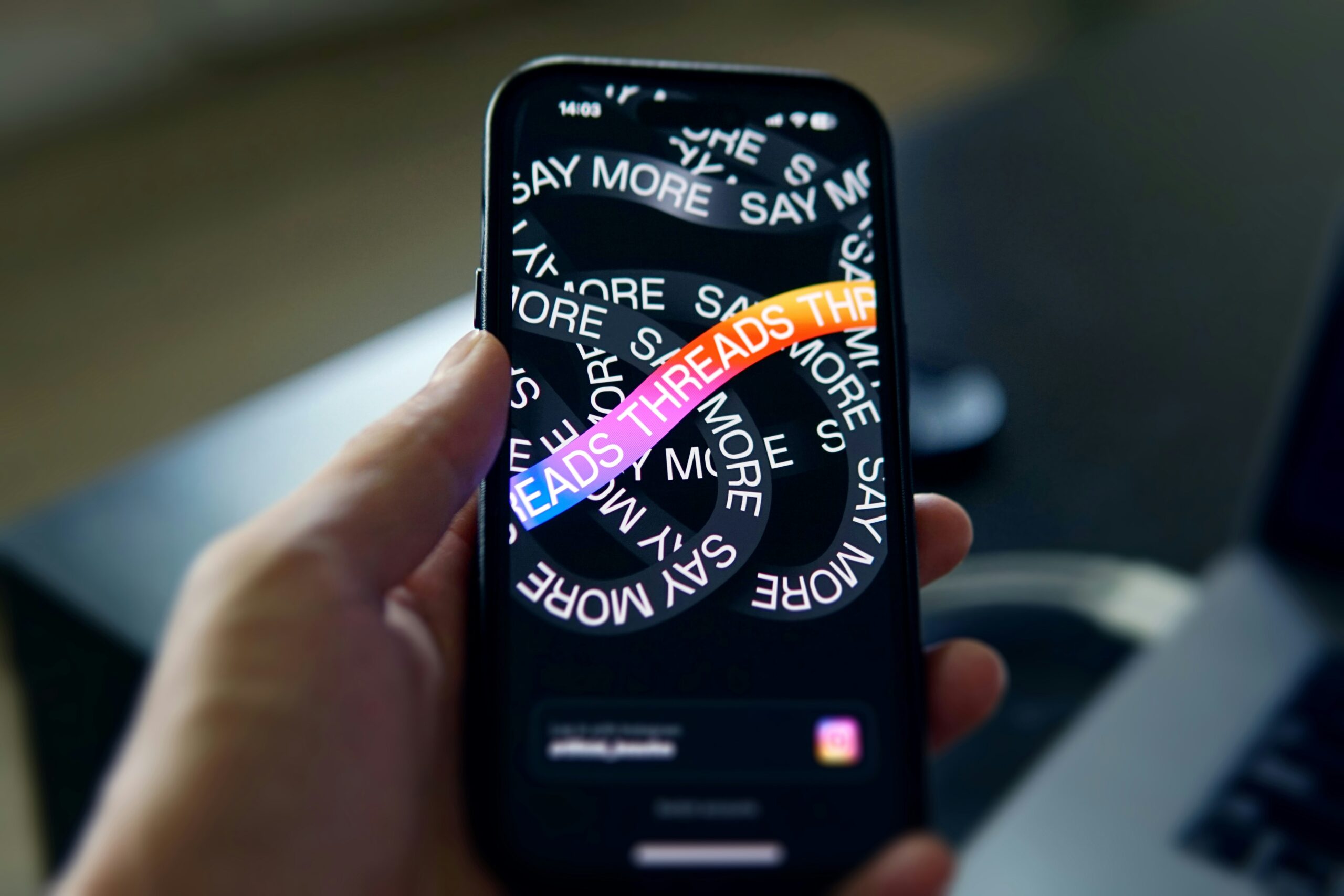
Social Factor
Finding Your Future at SF: Where Growth Meets Opportunity



According to an eBook produced by Asendia, a global e-commerce delivery company, “Authenticity is defined as how a shopper perceives a brand to be faithful to itself, its customers, and to the wider world, and is the basis on which shoppers trust them. This trust is lost when a brand looks as though it is trying to be something that it’s not.” As in delivery and e-commerce, authenticity in social media is crucial to gaining and maintaining the trust of a brand community. It goes beyond simple trust in the brand to be faithful to itself, though.
A post on Psychology Today discusses how people form emotional attachments to brands and don’t always make purchases to simply meet their needs. Many purchases are also a reflection of self: The idea that, “I buy Nike. I am, therefore, what Nike represents.” Because people assign emotional attachment to brands, when they interact with those brands on social media, if human connection isn’t reflected, trust in the brand wavers. Without that trust, there is no brand loyalty.
Don’t want to read the whole post? Here are some numbers to whet your appetite:
Emotionally connected customers are more likely to spend double on their favorite brands. An authentic human connection eases our tendency to say “no” when considering a purchase.
More than half (51%) of financial services customers are emotionally engaged, which is higher than other sectors. Which makes sense. Our finances are personal, and a feeling of human connection increases trust and a sense of security in the people who manage our money day to day.
81% of customers recommend and spend more money on brands based on the human connection they feel toward that brand. This means when companies invest in authentic connections, ROI grows like ripples on a still pond.
Recent research from Asendia found that when consumers believe brands to be authentic, 48% will still continue to shop with the brand even when faced with inflationary price increases.
So, what does it take for brands to show authenticity and human connection within the messaging? Let’s take a look!
We all know that brand tone and voice are important, but that’s not where the writing ends. When it comes to sharing authentic posts, there are at least four things to keep in mind: Platform community, brand perception, brand values, and tone and voice (they are still important, just not the end of the story). Let’s take a deeper look at how authentic language can build brand loyalty.
Every social media platform has its own ecosystem, and the demographics that make up these ecosystems play a big part in shaping the communities that arise. Brand communities don’t always travel from platform to platform. Facebook communities might not enjoy the same humor that bonds communities on X. TikTok viewers have slang that entertains those in the know but will confound anyone not familiar with certain trends. So, it’s essential for brands to personalize the content shared on each platform if they want to build a community. In essence, not all people like the same things. Connecting with the communities on each platform through their likes and interests will build loyal fans who follow your content and actually listen to what you have to say.
 It’s important for brands to step into social media with brand values in mind. Just like with humans, when a brand moves away from its values for the sake of “fitting in,” it will have difficulty building authentic relationships with fans because it isn’t a true reflection of the brand. That’s not to say brands can’t change people’s perceptions and grow into different versions of themselves on social media, but if they do, they must honor the values that already resonate with loyal fans.
It’s important for brands to step into social media with brand values in mind. Just like with humans, when a brand moves away from its values for the sake of “fitting in,” it will have difficulty building authentic relationships with fans because it isn’t a true reflection of the brand. That’s not to say brands can’t change people’s perceptions and grow into different versions of themselves on social media, but if they do, they must honor the values that already resonate with loyal fans.
One of the stickier parts of building brand loyalty on social media is understanding brand perception, meaning, the mental image formed when someone thinks about your brand. To them, perception is reality. It doesn’t matter what brand values are if customer perceptions don’t line up. In a post about the importance of brand perception, Ksenia Newton of Brandwatch says, “Brand owners may feel like they understand exactly what their brand represents. However, this image may be more reflective of their aspirations for the brand rather than the reality of public opinion.” If, for whatever reason, your brand is perceived as not being aligned with your values, then the road to brand loyalty has to be paved with more authentic moments and genuine discourse about the reasons for any changes and what to expect in the future. Without that, human connection is lost and any gestures toward showing authentic interactions will be seen as hollow and pandering.
Unless part of an entire rebranding strategy, social copy should align with expected tone and voice. If your brand uses clever language elsewhere, it’s welcome on social. If your brand is buttoned-down and highly corporate, that should be its approach on social. There are instances where brand voice on social media steps away from the traditional voice of the brand, but those changes happened incrementally and with the approval of already loyal brand communities. For those communities, incremental changes come across as authentic because the foundation had already been built. If the tone or voice change too quickly, the brand may be perceived as inauthentic, and some fans may step away.
During the 2024 Meltwater Summit, Social Factor’s VP of Strategic Partnerships, Kate Grigal, participated in a panel discussion on the importance of a human-driven experience within digital interactions. During this event, she said,
“Technology is amazing, but there has to be a balance between human connection and tech. It’s critical for each brand to ensure that the conversations you are having with your customers are authentic and real. The internet is savvy, and you don’t want to lose trust with robotic language when talking to your communities.”
—Social Factor’s VP of Strategic Partnerships, Kate Grigal
What does that balance look like? Proactive and reactive responses. Reaching people where they are and ensuring there is “someone” on the other side of the conversation.
Building brand loyalty on social media isn’t always about waiting for customers to come to you. “People love seeing (and sharing) positive reactions between brands and real people,” according to Buffer. Since consumers assign emotional connections to brands, when a brand reaches out to a consumer outside of the expected brand community, that added human connection drives authenticity through the proverbial roof and can create a lifelong fan. There’s a reason musicians make eye contact with fans during shows: Human connection is essential to our survival, and in a transactional setting, it’s the tie that binds a brand and its community. No longer is the customer speaking to the brand as a business. They are speaking to the person who represents the brand and, in a way, to the parts of themselves they see in the brand.
Being proactive applies not only to customers found in the wild, but also to those who share brand love on your social media pages. And that love should be returned. A Journal of Retailing and Consumer Services article posted on ScienceDirect about active customer engagement in the social media of luxury brands explains that there are many motivations that lead customers to comment positively on a social media page, and those motivations all come with a desired response. So, as stated above, there is an expectation of connection in social media engagement. Customers don’t want to shout into a void, “I always wanted a pair of Jordans.” They want to hear back, “It’s never too late, man. These 39s were made for you!” Human connection by way of personalized response lets customers know they are seen and valued.
More than ever, when customers have a negative experience with a brand, they take to social media. According to Sprout Social, 76% expect quick support from the brand, with 69% expecting that support to happen within 24 hours. Whether the situation is good or bad, 70% expect the response to be personalized. In other words, when a person is upset, they want to believe there is someone on the other side listening, empathizing, and connecting with them. That human connection and the swiftness with which it addresses disappointment can mean the difference between recovering an upset customer or losing that customer (and those they’re connected to through word of mouth) because they feel unseen.
No matter how savvy your business is, it’s impossible to keep everyone happy 100% of the time, but building an authentic connection from the beginning goes a long way toward keeping customers to the end. Amazing things happen when human connection and customer satisfaction align. According to Harvard Business Review, “Fully connected customers are 52% more valuable, on average, than those who are just highly satisfied.”
There is more value in human connection than in keeping people “highly satisfied.” Connected customers become brand advocates and ambassadors, and their loyalty to the brand pays off even on bad days.
One of the biggest changes in the world today is the introduction of artificial intelligence (AI). Some brands embraced adoption immediately and found ways to integrate AI into strategies to scale workflows. Others pushed back over ethical concerns AI introduced, including questions about social manipulation, unlicensed content, and outright plagiarism. A survey from Forbes Advisor found that 70% of consumers were concerned about AI-generated product descriptions and 58% had issues with chatbots answering their questions.
If even product descriptions and chatbots leave consumers feeling uneasy about AI, brand managers should consider whether utilizing it for business may diminish the perceived authenticity.
That’s not to say brands should abstain, but part of building an authentic human connection is being open and honest about the technology used and how it’s integrated. Another part is making sure your community understands that new technology (AI specifically) isn’t a stand-in solution for human interaction. During the Meltwater Summit panel mentioned earlier, the moderator pitched a question to Kate on the subject of AI. She said,
“Despite the imperative (to understand AI), there is no world where the thing we need to do collectively gets done without hands on keyboards.”
—Social Factor’s VP of Strategic Partnerships, Kate Grigal
And that’s the message that needs to be shared with brand communities to ensure continued loyalty and demonstrate authentic human connection: No matter how much technology is involved, no matter what changes may happen because of AI, there is no world where the thing we need to do collectively gets done without hands on keyboards. AI isn’t replacing human connection. It’s enhancing the ability to connect.
Social media users don’t simply want authentic human connection with brands; they demand it, and rightly so. If a brand manager chooses to utilize social media to share information with customers and drive them toward the business, it is crucial that they lean into the “social” half of social media. Authentic connection can’t be faked; social media users are too savvy for that.
So, to truly connect, brands on social media need to meet customers where they are. This means understanding the language of the platforms and taking time to build an understanding of brand values, as well address any concerns regarding perception. Brands need to take time to respond to people who reach out and engage them in ways that feel genuine. As technology changes, it’s important to provide a sense of transparency to customers and address concerns regarding those technologies, as well as assure customers that human connection is not going away.
Let’s remember: This is about building authentic relationships with customers. It’s about showing the people on one side of the monitor that they are heard by the people on the other side of the monitor. Building brand loyalty through authentic human connection is less about understanding the steps it takes to achieve the result and is more about remembering that we are humans talking to other humans. We all want to be heard. The best way to build brand loyalty is to take some time to understand your community, meet them where they are, and when it’s time to connect, do so in an authentic way. That’s what they want. That’s what we all want.
Need help finding an authentic voice for your brand? We’re here for you: www.socialfactor.com/connect

Finding Your Future at SF: Where Growth Meets Opportunity

Transform your Digital Strategy by Using Tech and SaaS for Optimal Resource Utilization

Building Brand Loyalty Through Authentic Human Connection

Sail Through Social Media Budget Planning with Ease

How Brands Can Navigate Pre-Election Chaos on Social Media

Threads: Is It Worth It Yet?

Jack “Of All Trades” Dorsey Is No Longer on the Bluesky Board

Celebrating Diversity at Social Factor

Coachella: What It Takes to Livestream the Festival on YouTube

How Fort Worth’s Social Factor Is Rocking ‘Human Connection’